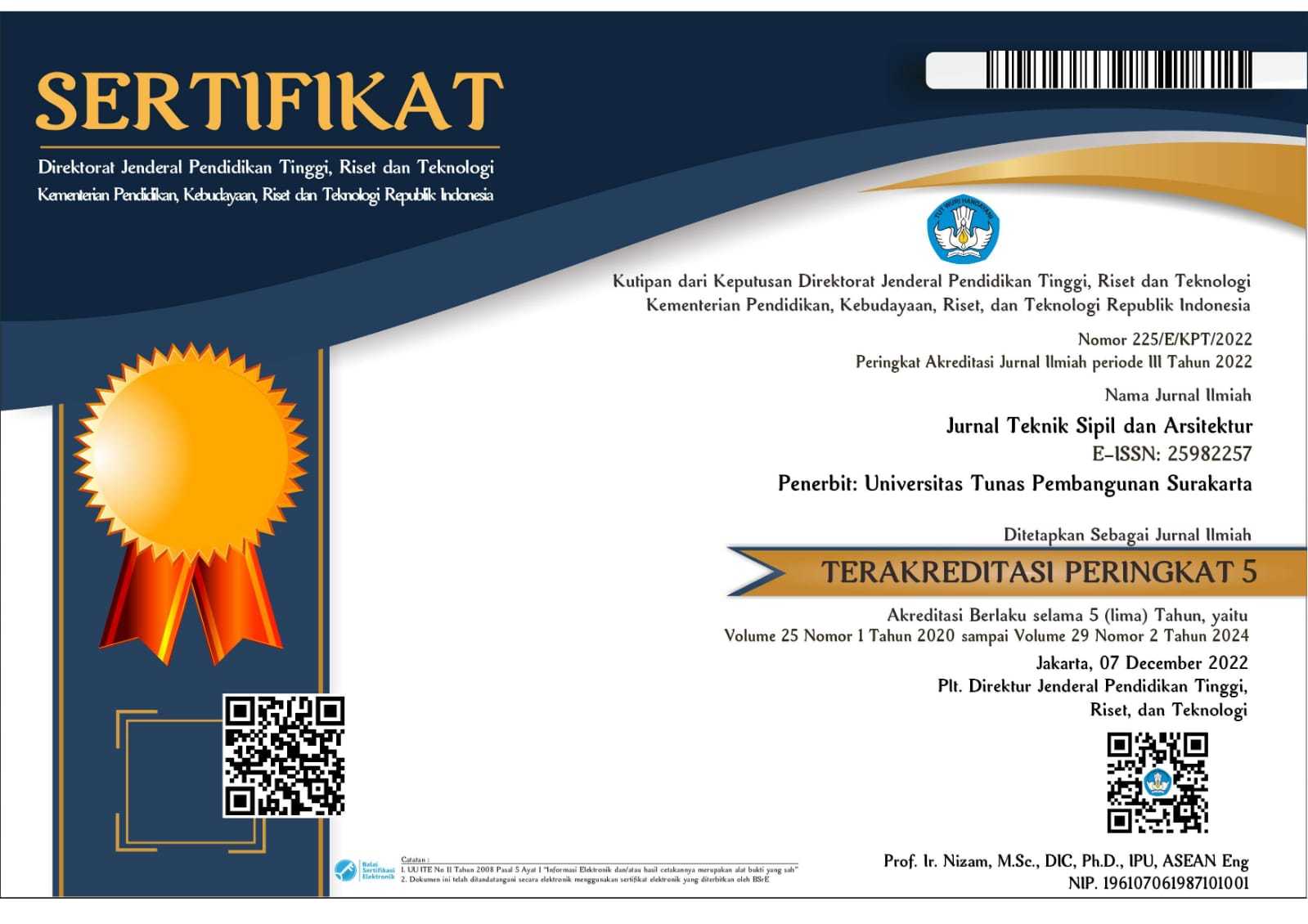SUSTAINABLE GREEN CONCRETE USING SHELLFISH WASTE POWDER, AND RICE HUSK ASH
shellfish waste powder, rice husk ash, green concrete¸ mix design
Abstract
The growth and development of infrastructure is currently very rapid and the cement production process also produces a lot of carbon dioxide which plays an important role in global warming that is happening in this world. In the last decade, many innovations have been made to conventional concrete so that it has high strength, is durable, cheap and environmentally friendly and easy to apply in the field. Therefore, new sustainable materials are needed to replace cement production, but these materials are also required for the workability required to make concrete. The concept of green concrete, the use of rice husk ash waste, and shellfish waste can be a solution to replace some cement and some fine aggregate. This innovative concrete research was obtained using shellfish waste powder 10%, and rice husk ash 10%, shellfish shell powder waste with the main element calcium oxide (CaO), can be a substitute for fine aggregate and rice husk ash waste which contains (SiO), can be used as an additive or partial replacement of cement in the manufacture of concrete, this innovative material can reach a value of 7 days reaching 35 MPa. And the normal mix design concrete is 30 MPa. With the slump test target according to the 1972-2008 SNI standard, which is 30-60 mm, it can be concluded that it can be a reference source by utilizing waste in Indonesia, easy to obtain, and effective.
Copyright (c) 2022 Jurnal Teknik Sipil dan Arsitektur

This work is licensed under a Creative Commons Attribution-NonCommercial-ShareAlike 4.0 International License.

















